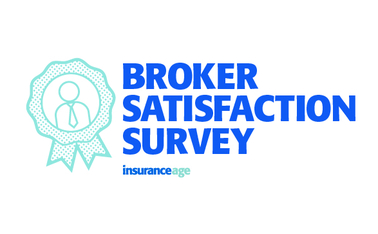
The stats: June 2021 - The Acturis Premium Index

Last year’s trends of continued growth in premium in property-based lines, tempered growth in liability classes and reductions in fleet premiums have continued well into the first quarter of 2021
The growth trend seen in the Acturis Commercial Broking Index last year has continued in the first quarter of 2021, with premiums increasing 0.7% on the Q1 2020 value.
Property owners once again saw the largest hike, with premiums rising 5.1% compared to Q1 2020. Packages and combined liability have also continued to grow, while commercial combined and fleet experienced falls in premium.
Analysing individual product lines, Q1 premiums in commercial combined declined less than 1% year-on-year. This is the third consecutive quarter of negative growth and follows premium increases during 2019 and the first half of 2020.
Ian Newman, head of SME strategy and development at Covéa, noted that the performance of this product line had been impacted by lockdown.
He explained: “We’re seeing strong rates, we’re not seeing people trying to undercut us and go into negative rate strength, so it must be the impact of businesses reducing activity. You’d expect this to begin to recover as lockdown eases and business gets more normal.”
Paul Dickson, CEO of Innovation Broking, said he was taken aback by the levelling out of the rate changes for commercial combined: “I was surprised that the higher rate uplifts were all through 2020 and once we got into 2021 the index indicates a negative, a rate reduction, which I think suggests that we’re returning to something of normality in the mainstream commercial sector.”
Meanwhile, fleet premiums have been reducing year-on-year since March 2020, with Q1 2021 seeing a 2.7% fall on the same quarter last year.
However, Paul Beck, managing director at Direct Insurance Corporate Risks, disagreed with the figures: “I think the decreases in fleet premiums are not representative of the picture we see on the ground.
“Reduced premiums may still be a reflection of reduced vehicle numbers on the road during lockdown, but there is no doubt that fleet rates themselves are most definitely on the up in Q1 2021.”
On the other side of the spectrum, trends in property owners’ premiums have been the opposite of fleet in the past four quarters.
Newman commented: “The residential property owners is still a competitive market and isn’t seeing the same increase as the commercial property sector, but both sectors are still seeing an increase in the average premium, with commercial going into the double-digit percentage increase.”
Dickson noted: “Property owners is continuing to show increases through to Q1 and that’s the specific factors faced by the property insurance companies with issues around high-rise buildings, cladding, and under pricing of property risks for a good number of years.”
Packages have seen steady growth, with premiums in Q1 2020 increasing by 3.8% compared to Q1 2020.
Newman noted that this trend is in line with the competitive market. He added that rates are increasing as well, however, due to a reduction in exposure, he is not seeing increases as high as they would normally be in the market.
Dickson explained: “The level of the reduction of the rate increase over the past couple of quarters into Q1 probably hasn’t declined as much, but generally speaking, package insurance rates have been incredibly low because of the massive amount of competition in this area.”
Dickson also noted that combined liability is broadly following the trend of commercial combined, and that rate increases seem to tail off.
According to the index, the first quarter of 2021 saw an increase of 3% year-on-year, but this is substantially less than the growth of 8% and upwards that was seen in the first half of 2020.
Overall, experts believed that the market will continue to harden, with rates remaining strong across all product lines. In addition to an increase in premiums, Beck predicted that underwriting flexibility will be curtailed.
Dickson also agreed that the market will remain constrained for the rest of this year, but he expected it to level out and “return to some sort of basic equilibrium”.
Explaining the figures
The Acturis commercial broking index consists of quarterly figures calculated on a base line of the first quarter of 2010. It has been designed to represent premium movements in a typical broker’s book of commercial business. This index uses weighted figures from commercial combined (35%), fleet (25%), property owners (18%), packages (12%) and combined liability (10%) indices based on the portion of GWP each class of business represents in a typical commercial book.
The further indices in the Acturis Premium Index covered in the text show year-on-year comparisons measured across £5bn of premium. The movements in premium can be driven by changes in the size of the risk and the level of the insurance rate. By comparing each quarter with the same period the year before it is most likely to set the pricing of similar risks against each other.
Only users who have a paid subscription or are part of a corporate subscription are able to print or copy content.
To access these options, along with all other subscription benefits, please contact info@insuranceage.co.uk.
You are currently unable to print this content. Please contact info@insuranceage.co.uk to find out more.
You are currently unable to copy this content. Please contact info@insuranceage.co.uk to find out more.
Copyright Infopro Digital Limited. All rights reserved.
You may share this content using our article tools. Printing this content is for the sole use of the Authorised User (named subscriber), as outlined in our terms and conditions - https://www.infopro-insight.com/terms-conditions/insight-subscriptions/
If you would like to purchase additional rights please email info@insuranceage.co.uk
Copyright Infopro Digital Limited. All rights reserved.
You may share this content using our article tools. Copying this content is for the sole use of the Authorised User (named subscriber), as outlined in our terms and conditions - https://www.infopro-insight.com/terms-conditions/insight-subscriptions/
If you would like to purchase additional rights please email info@insuranceage.co.uk







